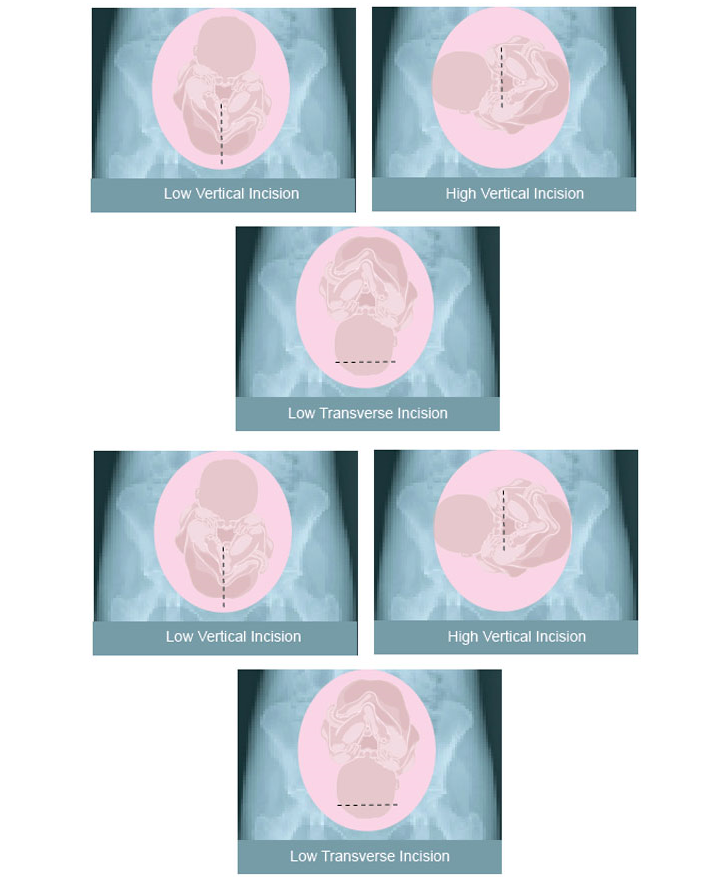When deciding how your next baby will be born, your wishes and certain medical factors will be considered. A key factor in deciding the method for your next birth is the type of incision made in your uterus for this cesarean. The type of incision used for your cesarean birth was decided by your doctor based on many factors. These factors include reducing health risks for you and your baby. Rupture of the uterus where the incision was made is the main risk to both you and your baby during an attempted vaginal birth after cesarean. Depending on the type of incision made, you may have a higher risk of your uterus tearing or rupturing where the incision was made. The risk of rupture is different for each type of incision.

The classical incision (high vertical incision) is an up-and-down cut made in the upper part of the uterus. Unfortunately, a complete tear or rupture of the scar is more likely during a future vaginal birth if this type of incision was made.
The low vertical incision is an up-and-down cut made in the lower, thinner part of the uterus. The risks with vaginal birth after this type of incision are not clear. If you had this type of incision, ask your doctor about your future options for a vaginal birth.
The low transverse incision is made from side-to-side across the lower, thinner part of the uterus. It heals with a stronger scar and is the least likely to rupture, tear, or cause problems in a future vaginal birth.
The type of incision made in the skin of the abdomen (up-and-down or side-to-side) is not always the same as the type of incision made in the wall of the uterus. You can’t tell what type of incision was made in your uterus from looking at the scar on your abdomen. Knowing what type of incision you have can help you prepare for a cesarean or vaginal birth with your next pregnancy. However, without your medical records, it is unlikely that your doctor will know which type of incision was made in your uterus. Get a copy of your prior medical records if you are considering VBAC.
